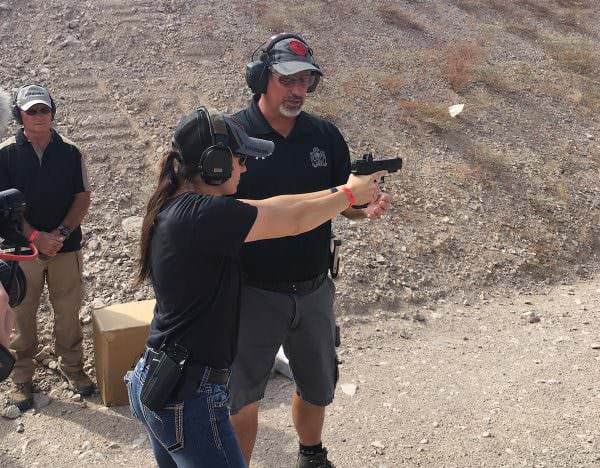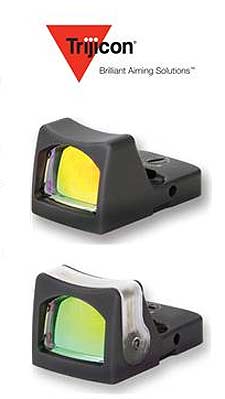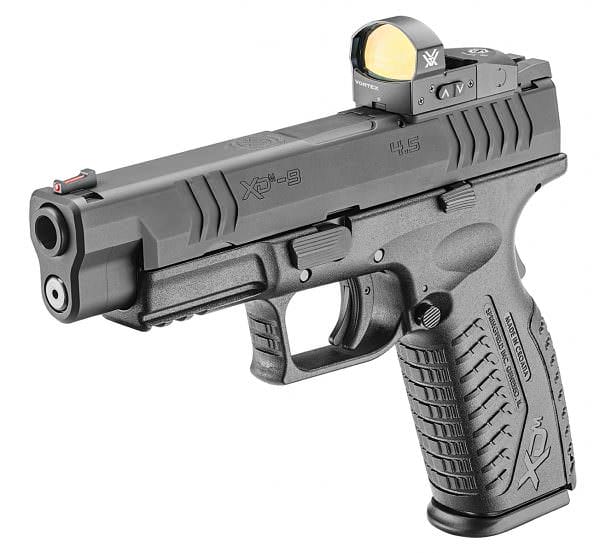By Tom McHale
Firearms writer, Tom Mchale, weighs in on why he says you will agree that Self Defense Gun Optics are a good choice.


USA –-(Ammoland.com)- Believe it or not, there was a time that shooters went into full-scale revolt about the idea of putting scopes on rifles.
You’d hear arguments like “Why would I want to put something that will just break on my rifle? Iron sights will always work!”
Fast forward some decades and similar arguments popped up like Whack a Moles about the ridiculous idea of putting red dot optics on fighting rifles.
The arguments were similar, just updated for the times. Whether the complaints were about potential reliability problems or more along the lines of “The batteries are going to run out just when you need them most,” there was plenty of resistance to a new way of doing things.
Now, when you drove around places like Parris Island, you’ll see rifles neatly stacked all equipped with optics, even for basic training. While most people feel good having backup iron sights, even the perceived necessity of those is diminishing.
I’ll never argue against the wisdom of having a backup, but in civilian usage scenarios, it’s a rare thing indeed for a quality optic to fail.
The one sure thing about new self defense gun optics technology is that it plows relentlessly forward and over time, new inventions that many initially consider gimmicks gain reliability and trust.

I think the next example case of new gear becoming mainstream is the idea of sticking optical sights on defensive handguns. It’s not a new concept – competitors have been using red dot sights on pistols for quite some time. But risking failure of an electronic piece of gear on a competitive stage carries a lot less downside than a similar failure when fighting for your life. Most steel and paper targets don’t shoot back.
I’ve been tinkering with optics on handguns for a few months now, and as I write this, I’m out in the Nevada desert learning some new techniques with Springfield Armory’s Rob Leatham and the knowledgeable folks from Apex Expert Solutions. We’ve been shooting the new Springfield Armory XD(M) OSP pistol equipped with Trijicon RMR sights.
During Rob’s introduction to the class, he explained that there are two primary benefits to using optical sights on a self defense handgun:
First, everything is in the same focal plane – target and the sighting dot. Look at your target and the dot will appear superimposed on it. There is no need for your eye to shift focus to and from the front sight, rear sight, and target.
From a purely common sense perspective, this is a good thing. Not only does your brain save time avoiding all that focus point switching, your noggin tends to focus on threats naturally anyway. Why not embrace that natural tendency with the equipment we use?
Second, red dot sights largely eliminate the ill effects of less than perfect vision. If you’ve got aging eyes and require a little lens correction to see a crisp front sight, there’s a good chance that you won’t have that problem with a red dot optic.
As Rob Leatham says, “an optical sight gives you years.”
I think there’s another benefit. A red dot is really helpful, because it’s really visible, in low light conditions. Make no mistake, it won’t help you identify a target in the dark, but it will help you aim in less than ideal light conditions.
On the flip side, there are certain drawbacks to consider.
Self Defense Gun Optics – Finding the Dot

To address the giant Harambe in the room first, there’s the issue of finding the dot. Under time or violent encounter stress, you may raise the gun only to see an empty window. At exactly the moment you need to shoot quickly you might be more occupied with figuring out how to aim. I have to wonder if this challenge is somehow analogous to early rifle scope users learning how to cheek weld consistently to gain the correct eye placement relative to the scope. We’ll come back to this later.
On a related point, some people lose the dot during recoil. Most of the time, the reason for this is that the muzzle ends up pointing slightly down after the shot.
As Rob explained, that’s almost always a result of one of two things: overcompensation against recoil or a natural tendency to lower the gun to see where you shot went.
Self Defense Gun Optics Reliability
Next up is the reliability concern. Unless you’re able to set up a co-witness configuration where you still have a clear view of iron sights, then an equipment breakage or malfunction can make your life somewhat difficult.
When new technology enters from stage left it can be finicky and fragile in the early years. Until gear has been through not only rigorous testing but also real word use by thousands of users, it’s probably a good idea not to trust it with your life. At this point in optical sight history, we have a lot of real world experience. Optics are tough and have proven their ability to stand up to not only a steady diet of punishing recoil but knocks and dings.
The bottom line is that if you buy quality gear, you’re going to have to try really hard to break it, especially under normal concealed carry or home defense usage scenarios.
Self Defense Gun Optics Batteries
Knowing that someone is going to bring up the battery issue, let’s talk about that for a second. Yes, the batteries might go dead. On the other hand, your car can also go dead at any moment by running out of gas. We’re all responsible enough to manage to keep our cars full of fuel, so I tend to believe we can also take responsibility for changing batteries in an optical sight on a regular basis. Rather than waiting to find out that your optic is dead, how about just changing batteries out on a recurring schedule? After all, we’re responsible enough to carry a lethal weapon, so I don’t think it’s too much to ask to swap batteries every few months. I like Aimpoint optics on my AR-15 rifles because you just leave them on and the batteries run for 75% of forever. Even still, I have a calendar reminder set up on my phone reminding me to swap batteries once a year.
Do I worry about my batteries failing? Nope, not at all. That’s because I act like a big boy and take responsibility for keeping the batteries fresh.

So How Do You Take Full Advantage Of A Self Defense Gun Optics Equipped Pistol?
Here are a few tips offered by up Rob Leatham.

Practice, practice, practice. Raising an iron sight equipped pistol into the perfect firing position from a draw where the front and rear sights are aligned with each other, and the target requires practice and repetition – lots of it. The same thing applies when using a red dot sight with your handgun. When sitting at home (using all proper and safe dry fire procedures) practice drawing your gun to a target. Do it slow and repeat – lots and lots of times. A trick is to try to forget about the dot. Strangely enough, many of us tend to get so wrapped up looking for the dot that we can’t find it. If you raise your gun as normal, looking for the front sight, the dot will simply appear. The proper aim and fire position of the gun is identical whether you’re using an optic or iron sights, so don’t make it harder than it has to be. I think you’ll find as you practice that the dot will start to magically appear on your target very quickly.
The other issues with self defense gun optics that may require some technique refinement is dealing with recoil. Whatever sights you’re using, iron or optics, your gun should end the recoil cycle pointed right back at the target, not above or below. If your muzzle tends to dip after each shot, that’s something you need to fix whether you’re using irons or the fancy electronic stuff. Grab that gun tight. Let it recoil, but don’t try to force it back down. With a solid grip and a recognition that recoil will happen, focus on just allowing the gun to settle back into its starting position. It might be hard to spot a muzzle dip problem so you can have a range buddy watch from the side to see how you’re doing. Of course, if you already have an optic on your gun, then you’ll know you messed up if the dot is no longer visible.
Time will tell, but I’d bet that self defense gun optics will become more and more common on carry guns. In my own experimentation, I find I can shoot more precisely faster when using an optic.
For extreme close range shots, I’m not really using a dot or iron sights anyway, but rather pointing over the slide, so I haven’t experienced a drawback there. And on longer ranges, it’s been all upside so far.
About
Tom McHale is the author of the Insanely Practical Guides book series that guides new and experienced shooters alike in a fun, approachable, and practical way. His books are available in print and eBook format on Amazon. You can also find him on Google+, Facebook, Twitter and Pinterest.
